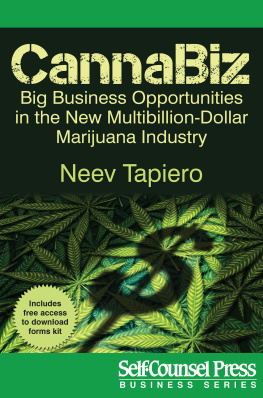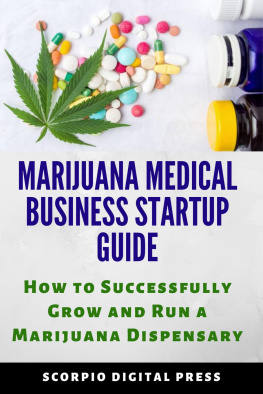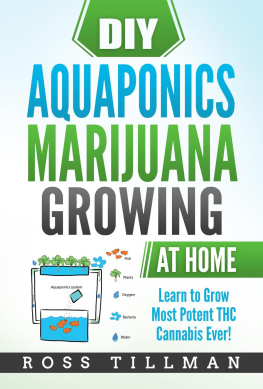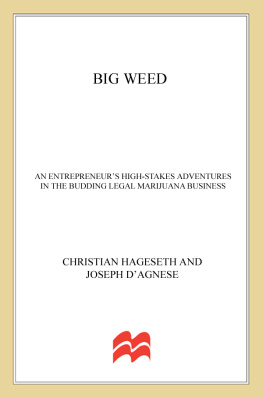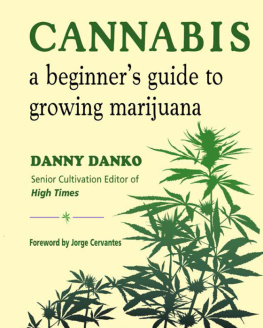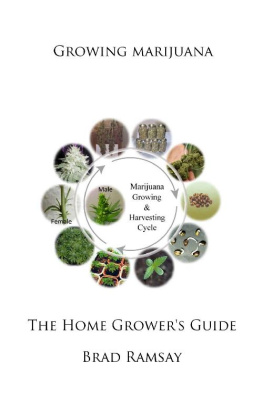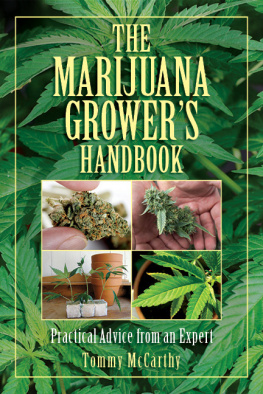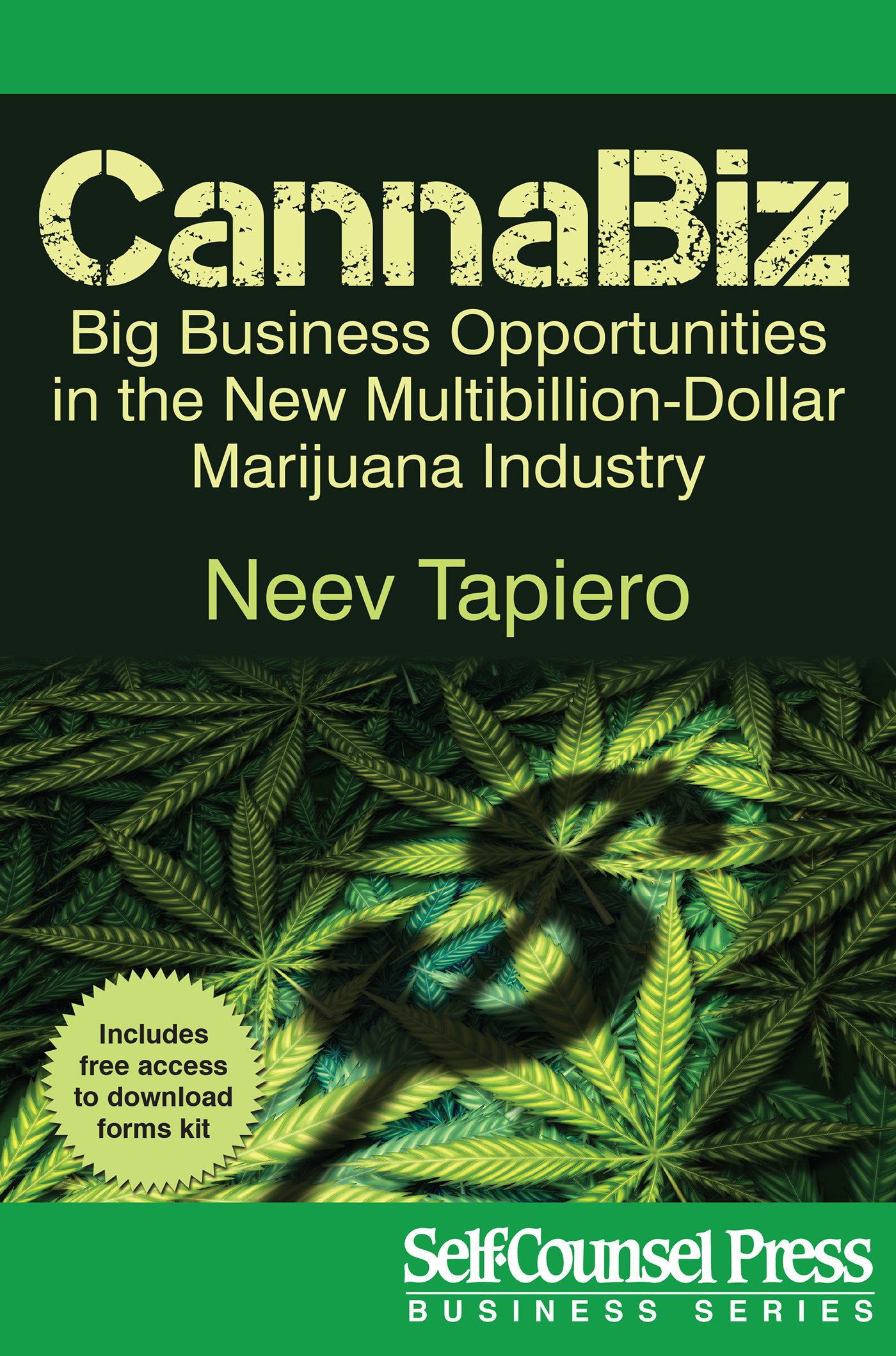Preface
Welcome to CannaBiz. I hope this book gives you a glimpse into a very new and very large world: The legal cannabis industry. No one has known legal cannabis in almost 100 years; our grandparents or great grandparents might remember. A director of Law Enforcement Against Prohibition (LEAP), a nonprofit, has called prohibition the worst social policy since slavery. (Not a comparison, but a timeline.) Slowly but surely, that is coming to an end.
Because cannabis has been criminalized (some would say excessively) for such a long period of time it had no presence outside the black market until recently. Canada is set to become the second G7 country to legalize cannabis across the entire country, after Uruguay did it in 2014 (Weed around the world: what legal marijuana looks like in other countries Global News, 2013), which will put it at the forefront of the new industry worldwide. It is a once-in-a-lifetime opportunity for real change in social values.
My personal romance with cannabis began in the early 90s when I was in university studying for my undergraduate degree. I liked to read, among other publications, High Times magazines in my dorm room. Reefer madness and mandatory minimums were the policy of the day under the American Bush/Clinton/Bush administrations.
At that time, the AIDS crisis was just past its height in terms of public health issues and its stigmatization. New HIV combination therapies required individuals to consume 10 to 40 pills per day, and these pills often came with horrible side effects. Most notably was wasting syndrome, where lack of sleep and appetite were combined with a dangerously rapid loss of weight. Those with this syndrome were simply unable to absorb nutrients. Many died, not from HIV/AIDS directly but because of the symptoms related to the therapy. The same is said of other diseases such as cancer; the chemotherapy that can fight cancer can ravage the body.
In all this craziness, there was also some good; out came a story about San Francisco local named Dennis Peron who operated the first Cannabis Buyers Club, which openly sold cannabis to those in medical need.
Other feel-good stories came out too, such as the story of Brownie Mary (Mary Jane Rathbun), who gave marijuana-laced brownies to people in the San Francisco hospices which allowed them to feel relieved of some pain and therefore able to sleep, as well as relieved of nausea so they could eat (get the munchies), which improved the quality of life for many people.
At this time I was in my early 20s. I knew the War on Drugs was a total failure; it was a misinformation campaign; there is no logical connection between prohibition and access to nonaddictive and addictive substances; and cannabis was obviously not a dangerous substance as it had a beneficial presence in my life in terms of calming my anxieties and simply helping me to experience happiness.
Add my personal experiences to the fact that cannabis can save or improve the lives of people with HIV/AIDS, cancer, MS, spinal cord injuries, and other debilitating issues, and my interest was galvanized in getting involved in this industry.
Living in Toronto, I asked around at several hemp stores in the city and not only was no one engaging in a medical cannabis movement in Toronto, no one was engaged across all of Canada. Being a true Canadian, I wrote a letter to my federal Member of Parliament, asking for changes to the criminal code to allow the use of medical cannabis.
I called Dennis Peron at his San Francisco office and asked if I could visit him and observe for a few days. I went to visit him and John Entwistle and their team during my Christmas break. They had experienced a police raid a few months earlier so sales were limited, but politically they were very busy. They turned every day into a political opportunity to make the news, respond to news stories, and counter the pundits spin. It was very inspiring.
The medical cannabis industry in Canada, and elsewhere, was very much nonexistent, with no associations or groups, no infrastructure, no presence at all. Medical cannabis was written with quotes: medical marijuana or medical marijuana. Hemp stores had to have signs saying pipes and bongs are for tobacco use only. Truly, it was in its infancy stage. It was a true pioneering experience to be among the first to change attitudes and laws around cannabis, medical or otherwise. At the time I recall the thought of saving the whales seemed more realistic.
By the time I had completed my studies, the BC Compassion Club Society (BCCCS) in Vancouver had opened its doors. About two weeks later, I had opened up Cannabis As Legitimate Medicine (later called Cannabis As Living Medicine CALM) in Toronto with the help of James Wakeford, Jari Dvorak, and many other individuals, and a financial kickstart from Ms. Johanna Metcalfe. My own father was very leery of the legal risks I was taking, unsure my facts were accurate, but otherwise very emotionally supportive.
Over the last hundred years of prohibition, governments worldwide have not only imported the American War on Drugs philosophy into their countries, some have internalized a militant mentality to fighting drug use and abuse by legislating capital punishment, or very lengthy prison sentences for possession and/or trafficking of small amounts of cannabis. This is a testament to how backwards our national and international drug policies still are, as well as the over-politicization of the topic. A modern example of the Drug War gone crazy is the Philippines President Dutertes extreme approach to drug law enforcement (a Google search on this will bring up some scary stories).
Developing countries that receive international aid from the US are usually required to enforce, among other policies, the War on Drugs and require active enforcement of these issues, despite these countries often being unable to meet their higher priorities as it relates to their populations health and national prosperity. The prohibition of cannabis and enforcing the drug war is seemingly paramount.
The US has unique issues, with some states legalizing recreational marijuana while it is still illegal on the federal level. Canada has come a long way but there is still a long way to go. My hope is that this book helps us get there.
Introduction
In this book my hope is to give you an intrinsic look at an industry that captured my interest more than 20 years ago.
I have learnt it is unwise to look at the future without looking at the past. I would like to give you an overview of the current state of cannabis in comparison to past programs, while recognizing the this is an ever-changing industry on every level and by the time you read this, things may have already shifted some more.
I will give you a look at what I see, in my experience, as the best or easiest opportunities for entrepreneurs in trying to enter the industry. I hope that by reading this book, you will avoid many of the pitfalls newcomers experience.
While I saw cannabis as a viable industry back in my late twenties, at that time you could say that I had the perfect blend of fearlessness, naivet, and a fire in my belly to take a chance on an uncertain and bumpy road. It was completely uncharted territory and it excited me.

